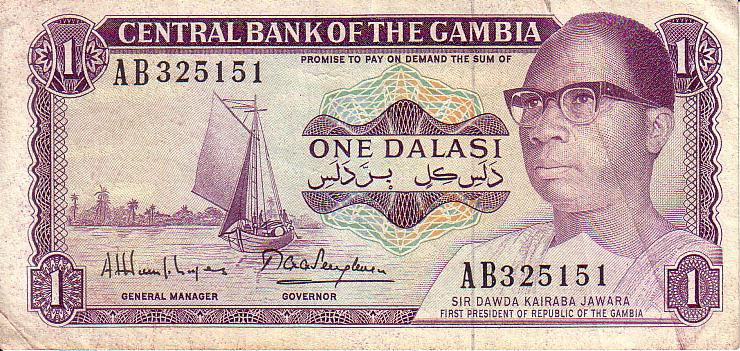
Banknotes Grading
________________________________________
Paper Money Grading Guide
The tree of numismatics has many branches. One of the most interesting is the field of paper money.
Just as with coins, grading is perhaps the single most important ingredient of value when it comes to collecting paper money. And just as with coins, we have descriptive terminology to denote the condition of paper currency in grades ranging from poor to uncirculated. We’ll cover grading a bit further on.
But first you must determine the general “look” of a banknote–its “eye appeal”, if you will. It has to look really nice in your eyes.
Does the note appear to be washed out or faded in color? Does it have any creases? Does it have any tears, pinholes or staple marks? Does the note display any evidence of having been repaired? Can any pressed-out creases be detected? Examine both the face and the back of the note. Are there any pencil or ink markings? Are one or more edges trimmed so as to remove a possible defect?
All of the above play contributing roles in ascertaining the true grade and resultant value of a banknote.
For example, an uncirculated banknote must not have any of the above-mentioned flaws, otherwise it will not maintain its full value in the uncirculated grade. Flaws will cause a banknote to lose some value; the more significant the flaw the greater the loss in value. Too many faults and it will become a note that no other collector will want to purchase.
Another example would be a pencil mark on the front (face side) of an uncirculated banknote. This pencil mark, or number, may very well be a “counting mark” to denote the number of banknotes contained in a bundle after counting is performed by a machine. The note may still, by definition, remain uncirculated but will, of necessity, sell at a discounted price to that of a similar note without the pencil marking. It won’t do any good to erase the marking – an eraser will only damage the paper and evidence of the mark will still remain.
The centering of a banknote also plays an important role in the desirability and value.
A well-centered banknote is worth considerably more than one that is off-center. This plays into the demand factor as well. Collectors–dealers too, for that matter–prefer a well-centered note. And before the letters come in stating that I am over-emphasizing the “value” factor, be assured that I must present all of the facts before you go out and spend your hard-earned money. These facts concerning flaws and other pertinent details that contribute to the value (or lack thereof) of any numismatic collectible can only serve to protect you as a consumer. A bargain will always look like a bargain and will not be in any great demand by a knowledgeable collector.
The well-informed buyer is more astute and less likely to make a bad purchase, so careful inspection and evaluation of any coin or banknote is essential.
Keeping that in mind, and realizing that one or more defects impacts these factors, let’s take a look at how to grade a banknote. The basic grading guidelines that follow may be applied to the paper currency issued by any nation:
The physical characteristics of a note play an important part in determining its collectible appeal and value. Aside from those scarce or rare notes whose limited availability makes them desirable in almost any grade, there are many notes that have no additional monetary worth beyond their face value in ordinary Circulated condition. However, those same notes may command a premium in the highest Circulated grades and in Uncirculated condition.
Only advanced collectors and paper money professionals have the necessary training and experience to accurately and consistently grade the condition of paper currency. The following grading definitions and photos are presented as a guide only.
Good
A heavily circulated note with characteristics similar to Very Good except with more pronounced soiling and considerable wear and tear. Corners of the note may also be missing.
Very Good
An obviously well-circulated bank note with much creasing, folding and wrinkling noticeable. Note may be dirty, and corners may show much wear and rounding, and some tears may be present, though no pieces of the note should be missing.
Fine
Considerable circulation is apparent, with creases, folds and wrinkles visible, and most, if not all, of the crispness is gone. Edges show evidence of circulation, and there may be slight tears. Some fading of color noticeable, with some staining possible.
Very Fine
Still an attractive note, but with more pronounced wear from handling, though some crispness remains. May have several vertical and horizontal folds as well as slight dirt or smudging visible. No tears on the edges, though the corners aren’t as sharp as Uncirculated.
Extra Fine
Paper is clean and bright with original sheen. Light handling is apparent, with several light folds or one strong crease visible. Tears and stains are not present.
About Uncirculated
A note that at first glance might appear as Uncirculated, but closer examination discloses the slightest signs of handling, some minor corner folds, a light (not hard) crease, a slight finger smudge or some pinholes. Paper is still crisp and bright and has original sheen.
Crisp Uncirculated
A note that has not been released into circulation and is in the same condition as it was first produced. The paper must be firm and crisp, without any creases, folds or tears, and the corners must be sharp and square.